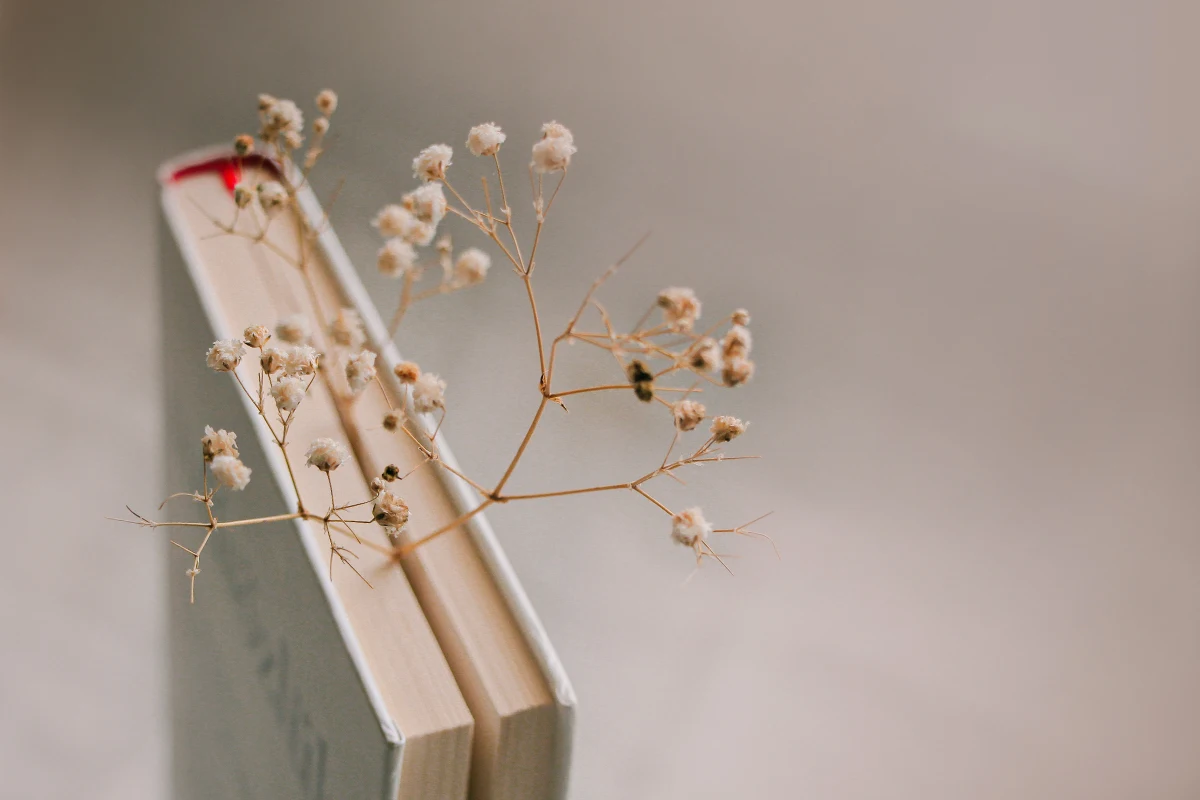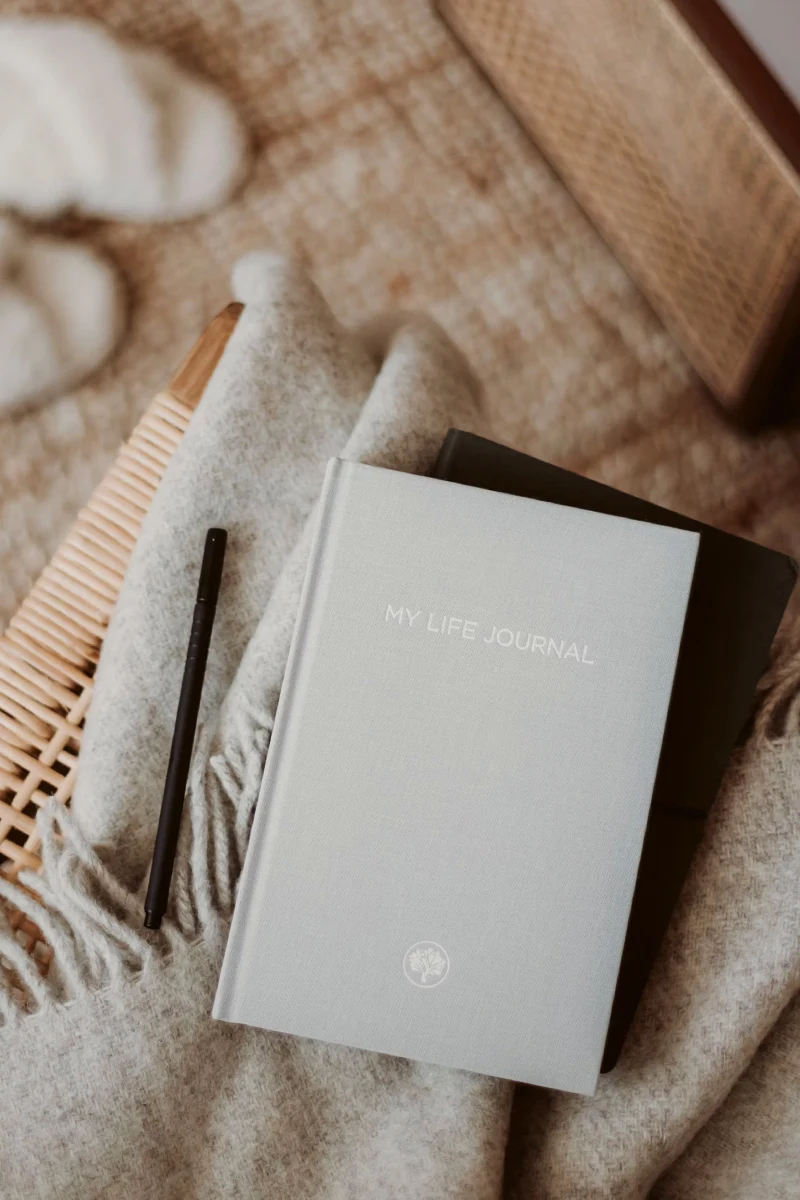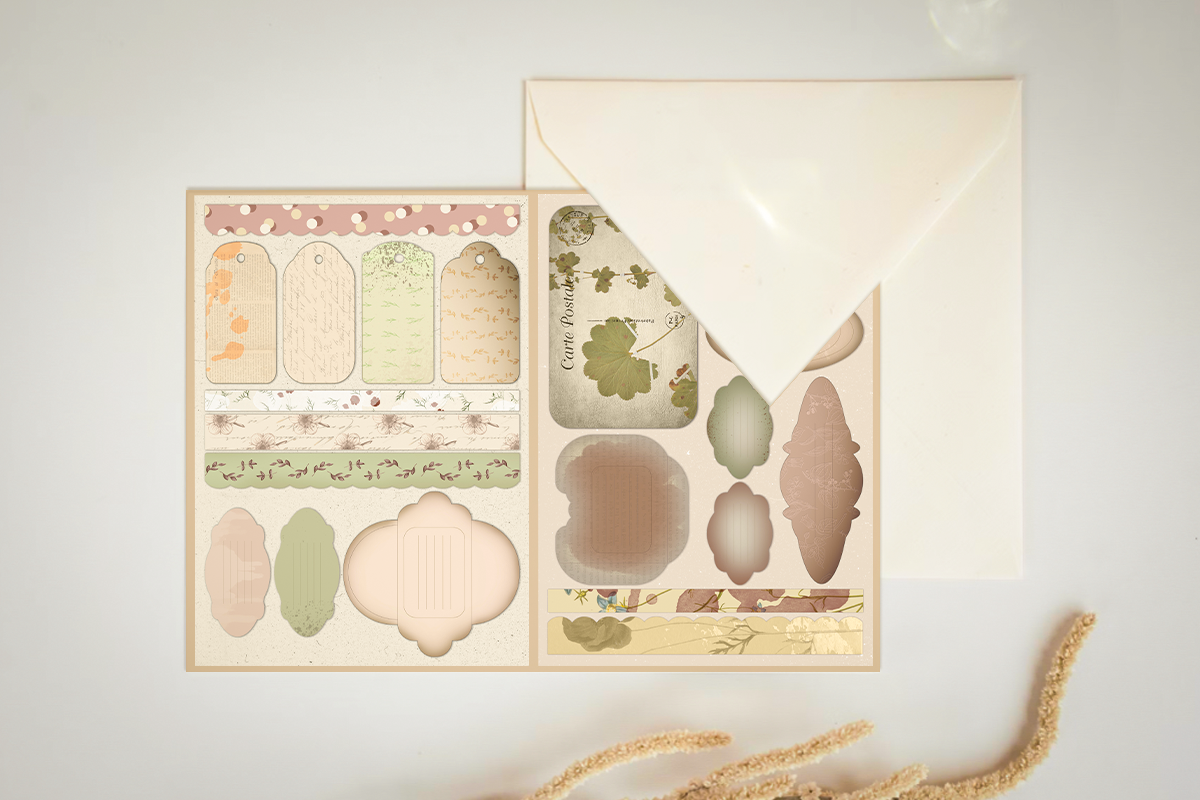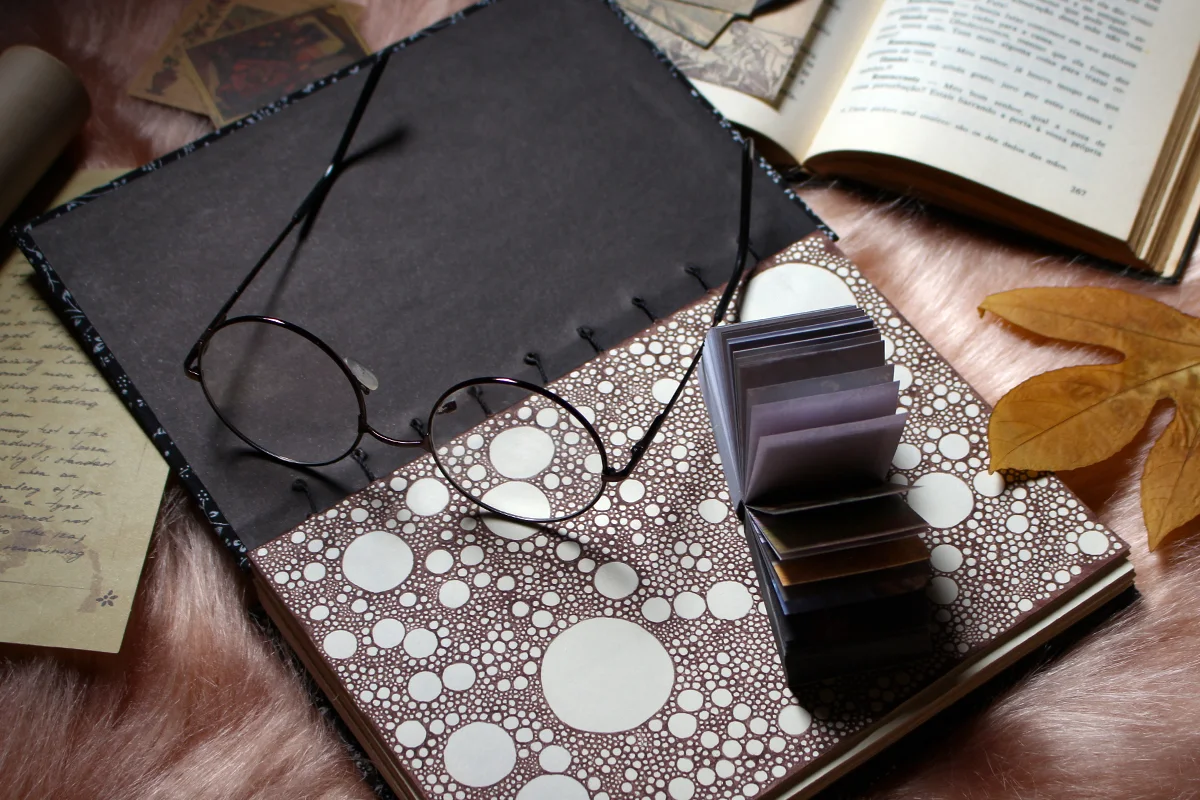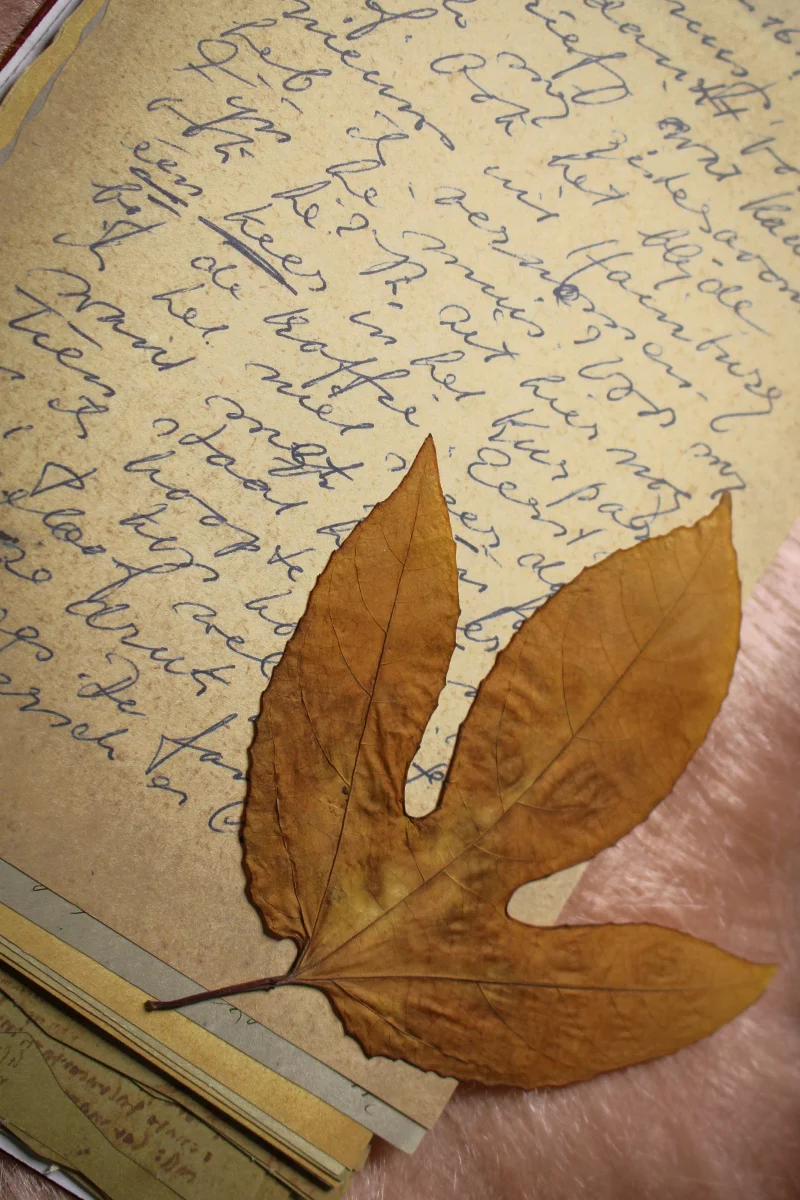Fall is a time of change and reflection. It's a perfect time to journal about your personal growth, ponder on your experiences, and achievements, and simply a time to be creative. In this blog post, I've gathered 50+ journal prompts to help you get started. These creative prompts are designed to help you explore your thoughts, feelings, and experiences more deeply. They can also help you set goals for the coming year and make the most of the fall season.
50+ Fall Journal Prompts for Personal Growth, Reflection and Creativity
• Describe the weather changes by day, expressing on a paper how it makes you feel.
• What's your favorite fall tradition, and why?
• Write a letter to your future self, reflecting on this autumn season. If fall had a scent, what would it be, and why?
• Share a recipe for your favorite fall comfort food.
• Describe a cozy fall evening spent by the fireplace.
• Create a bucket list of fall activities you want to experience.
• Write about the first time you felt the crispness of fall in the air.
• How do you celebrate Halloween? Share your costume ideas.
• List the things you're grateful for this autumn.
• Write a poem inspired by the sound of leaves crunching underfoot.
• Recall your most memorable Halloween costume from childhood.
• Describe the taste of your favorite fall beverage (e.g., pumpkin spice latte).
• Share a spooky story or urban legend related to the fall season.
• Write about your ideal fall road trip destination and why you'd go there.
• Explore the symbolism of the changing seasons in your life.
• Reflect on the significance of Thanksgiving and what it means to you.
• Write a letter to a loved one expressing your gratitude.
• Create a list of your favorite fall-themed books and movies.
• Describe the sensory experience of walking through a corn maze.
• Write about the things you love most about sweater weather.
• Share your thoughts on the transition from summer to fall.
• If you were a tree, what type of tree would you be in the fall?
• Write a fictional story set in a haunted forest during autumn.
• Explore the concept of letting go and shedding old habits like trees shed leaves.
• Describe the perfect fall day from beginning to end.
• Write a list of things you'd like to accomplish before winter arrives.
• Share your favorite fall-inspired quotes and explain why they resonate with you.
• Create a collage of autumn images that inspire you.
• Write about a memorable autumn adventure you had as a child.
• Reflect on the changing relationships in your life during this season.
• Share your favorite fall-inspired art or photography.
• Describe the sound of rain tapping on your window on a cozy fall day.
• Write a letter to your future self about your goals for the upcoming year.
• Explore the concept of rebirth and renewal in the fall season.
• Write about a fall festival or fair you attended and what made it special.
• Share your favorite fall fashion trends and accessories.
• Describe the feeling of crisp autumn air on your skin.
• Write about the role of harvest and abundance in your life.
• Create a gratitude list for people who bring warmth to your autumn.
• Explore the symbolism of pumpkins and jack-o'-lanterns in your life.
• Write a list of activities to beat the fall blues on gloomy days.
• Share your favorite fall songs and the memories associated with them.
• Describe the sensation of sipping hot cider around a bonfire.
• Reflect on the cycle of life and how it parallels the changing seasons.
• Write about a spooky encounter or ghostly tale from your past.
• Explore the beauty of decay and transformation in the natural world.
• Share your thoughts on the connection between autumn and personal growth.
• Write a letter to your inner child, discussing the magic of fall.
• Describe the feeling of crunching leaves under your boots as you walk.
Summarizing...
Journaling is a great way to process your thoughts and feelings, and it can be especially helpful during a time of change like fall. By writing about your experiences, you can gain a deeper understanding of yourself and your goals. So don't be afraid to experiment with different journaling prompts and find what works best for you. Happy journaling!
50+ Fall Journal Prompts for Personal Growth, Reflection and Creativity
50+ Fall Journal Prompts for Personal Growth, Reflection and Creativity
Fall is a time of change and reflection. It's a perfect time to journal about your personal growth, ponder on your experiences, and achievements, and simply a time to be creative. In this blog post, I've gathered 50+ journal prompts to help you get started. These creative prompts are designed to help you explore your thoughts, feelings, and experiences more deeply. They can also help you set goals for the coming year and make the most of the fall season.
50+ Fall Journal Prompts for Personal Growth, Reflection and Creativity
• Describe the weather changes by day, expressing on a paper how it makes you feel.
• What's your favorite fall tradition, and why?
• Write a letter to your future self, reflecting on this autumn season. If fall had a scent, what would it be, and why?
• Share a recipe for your favorite fall comfort food.
• Describe a cozy fall evening spent by the fireplace.
• Create a bucket list of fall activities you want to experience.
• Write about the first time you felt the crispness of fall in the air.
• How do you celebrate Halloween? Share your costume ideas.
• List the things you're grateful for this autumn.
• Write a poem inspired by the sound of leaves crunching underfoot.
• Recall your most memorable Halloween costume from childhood.
• Describe the taste of your favorite fall beverage (e.g., pumpkin spice latte).
• Share a spooky story or urban legend related to the fall season.
• Write about your ideal fall road trip destination and why you'd go there.
• Explore the symbolism of the changing seasons in your life.
• Reflect on the significance of Thanksgiving and what it means to you.
• Write a letter to a loved one expressing your gratitude.
• Create a list of your favorite fall-themed books and movies.
• Describe the sensory experience of walking through a corn maze.
• Write about the things you love most about sweater weather.
• Share your thoughts on the transition from summer to fall.
• If you were a tree, what type of tree would you be in the fall?
• Write a fictional story set in a haunted forest during autumn.
• Explore the concept of letting go and shedding old habits like trees shed leaves.
• Describe the perfect fall day from beginning to end.
• Write a list of things you'd like to accomplish before winter arrives.
• Share your favorite fall-inspired quotes and explain why they resonate with you.
• Create a collage of autumn images that inspire you.
• Write about a memorable autumn adventure you had as a child.
• Reflect on the changing relationships in your life during this season.
• Share your favorite fall-inspired art or photography.
• Describe the sound of rain tapping on your window on a cozy fall day.
• Write a letter to your future self about your goals for the upcoming year.
• Explore the concept of rebirth and renewal in the fall season.
• Write about a fall festival or fair you attended and what made it special.
• Share your favorite fall fashion trends and accessories.
• Describe the feeling of crisp autumn air on your skin.
• Write about the role of harvest and abundance in your life.
• Create a gratitude list for people who bring warmth to your autumn.
• Explore the symbolism of pumpkins and jack-o'-lanterns in your life.
• Write a list of activities to beat the fall blues on gloomy days.
• Share your favorite fall songs and the memories associated with them.
• Describe the sensation of sipping hot cider around a bonfire.
• Reflect on the cycle of life and how it parallels the changing seasons.
• Write about a spooky encounter or ghostly tale from your past.
• Explore the beauty of decay and transformation in the natural world.
• Share your thoughts on the connection between autumn and personal growth.
• Write a letter to your inner child, discussing the magic of fall.
• Describe the feeling of crunching leaves under your boots as you walk.
Summarizing...
Journaling is a great way to process your thoughts and feelings, and it can be especially helpful during a time of change like fall. By writing about your experiences, you can gain a deeper understanding of yourself and your goals. So don't be afraid to experiment with different journaling prompts and find what works best for you. Happy journaling!

